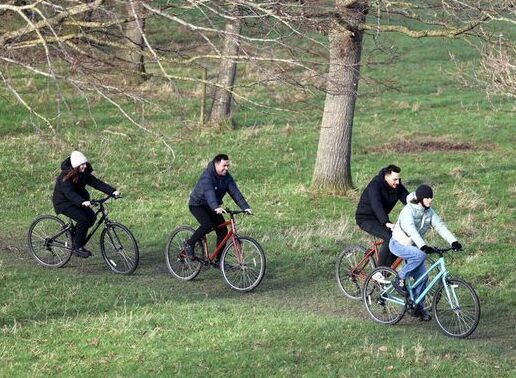Throughout Its long history the GAA has been regarded as a beacon of conservatism, just embracing minute changes along the way. Well, that staid status of Gaelic football appears to be ready for a profound change. The current president of the GAA, Jarlath Burns, responding to negative feedback about the current state of Gaelic football, decided some ameliorative action was required.
Gaelic football had evolved to the stage where possession was paramount resulting in a boring and unentertaining spectacle. The core skills of high fielding and long accurate kicking have been increasingly diminishing from the game. Thus Jim Gavin, the former Dublin player and manager, was commissioned to address Gaelic football’s problems. Gavin is chairman of the Football Review Committee, a 12-member group that consists of several noted former notable players. Among them are Eamon Fitzmaurice (Kerry), James Horan (Mayo), Michael Murphy (Donegal) and Malachy O’Rourke (Fermanagh). The group did a very comprehensive analysis of the situation which was augmented by reams of feedback. They came up with about a dozen proposals, that perhaps have the power to revitalize if not revolutionize the game if implemented.
They tackled the problems right from the start of the game. They propose that just one player from each team contest the throw-in as opposed to the current four players. The old format often leads to jostling and occasionally a free. The new format would eliminate the wrestling and lead to a faster start to the game. In the current game there’s often a dearth of scoring and the new changes could alleviate that. A goal would now be worth four points and a kick over the bar would be worth two provided it was from outside the forty meter arc. In the past players have often been accused of trying to “walk the ball over the bar.” Now longer distance shooting would be encouraged, while simultaneously forcing defenders out to try and block the longer range shooter, thus opening up space for potential attacks.
The kick-out regime would also be changed. The new system would require the ball to travel to the forty meter mark, and if an opposition player interferes, or intercepts it, the ball is brought to the fifty meter mark. In a sense, this change seems to harken back to the olden days, thus precipitating more opportunities for fielding. The back-passing to the goalkeeper would be eliminated, the keeper and a defender may pass the ball to each other, but only in the large rectangle.
One major change that will likely promote confusion and consternation is that each team must have three players behind their own “65” at all times. Of course the rational here is to eliminate congestion and “all players behind the ball” strategy. The penalty for infringement here is that if a player carries the ball beyond their own “65”, leaving less than three teammates behind, a free will be given to the opposition at the spot the player crosses the line. However at the other end, a player coming back to defend, will cost his team a 13-meter free. This change will certainly create plenty of space, but is it feasible with already overburdened referees?
Some of the proposed rule changes will definitely have players consider their actions. Tactical fouls such as throwing the ball away, holding or dragging a player by the jersey and interfering with free kicks would see the ball moved fifty yards. Dissent would also see the ball moved fifty meters, while aggressive dissent, such as that by a team official or substitutes, the free would be from the “13 meter”.
It’s almost the norm in the modern game that the free-taker steals a few yards to gain a more advantageous position for his kick. Now the application of the vanishing foam would clearly mark the spot from which the free must be taken. After a foul is committed considerable time elapses before the free is taken. The fouled player could hand the ball off to a teammate and he could continue on, this ploy is termed “Solo and go”. The time period for the mark is also extended, and the referee could allow it to continue as long as there is “positive momentum.” Now it’s a five-second period. The new mark could also be problematic given that’s the referee’s interpretation that counts.
The new rules would also stipulate that head-to-head contact, whether intentional or intentional, would be a red-card offense. This rule could be quite problematic. In recent times a discernible development seems to be happening in Gaelic football, head injuries. Invariably when a fouled player falls to the ground, they immediately grab their heads and writhe in apparent distress, though neither their opponent nor the ground made contact with their head. Can’t help but think that such fakery or acting is specifically designed to influence the referee’s decision in bestowing a more punitive sanction than warranted by the infraction. Are such Gaelic sports shenanigans now part of the coaching regimen?
The review committee also stated that contributing to a melee should result in a black card, unless you were trying to remove a teammate. One very positive proposal the committee has made is to get rid of the penalty shootout to determine a winner. They suggest replace it with an “overtime showdown”. This is the same concept that’s used in golf. The game is continued until a team scores, then the other team has to be given a chance. If the second team scores, play continues until whoever gets the next score and they are the winner. A Special Congress will review these proposals on Nov. 30 and whatever is adapted will be trialed in 2025 and finalized for the 2026 season.
FDNY 2-13 NYPD 1-7
The final of the Novice Cup, the Bravest against the Bravest, was played in Rockland on Saturday evening. The weather was perfect, the craic was good and the large crowd enjoyed a very competitive game though the contacts were a tad bruising at times. Both sides wasted early chances before a penetrating run by Shane Hogan was illegally impeded and Kevin Tracey pointed the resultant free. At the other end Shane Slattery saw an effort come off the post before he pointed from a free after Kevin Moran was fouled. Midway Francis Cole landed a fine long range effort and soon followed with another after a defense-splitting run. Brian Brady entered the fray and was duly fouled, leaving Brian Givney to point the resultant free. In the second quarter NYPD were more dominant as Kaelan Walsh. Mike Wickes, Kieran O’Neill were shutting the shooting routes while up front Francis Cole, Ryan O’Neill and Shane Slattery had the cops under pressure. Chris Morris added two points before the NYPD levelled on a counter attack. A powerful penetrating run by Shane Hogan set the scene for James Hennessy to bang in a goal. The NYPD had little time to enjoy their goal as Tommy Fennell came off the bench to rattle in one at the other end. The firemen finished out the period strongly with a superb point from center-back Kaelan Walsh to leave the firemen ahead by 1-6 to 1-2 at the break.
On resumption both sides exchanged fine points, Dave Brady for the NYPD and Shane McIntyre for the FDNY. The police appeared to have upped their performance as midfielders Hogan and Doherty scored from long range. At the other end a good pass from Shane McIntyre set up Chris Morris for a score. The police were soon back in the attack mode as Adrian Wynne looked destined to rattle the net but he was floored in the penalty area. Up stepped James Hennessy to take the penalty, but his shot was brilliantly saved by keeper Matt Schumacher. Shane Hogan eventually got a point from the ensuing goalmouth scrambles to leave the score at 1-8 to 1-6 with a quarter left. The NYPD wouldn’t get any closer as the fireman really caught fire for that period, they hit 1-5 while limiting their opponents to a single point. Shane Slattery began the scoring with a point before Kaelan Walsh got the best score of the game. The center-back travelled nearly half the field, leave several players in his way to score a superb goal. Further points followed from Slattery(2) and Morris before a Brian McGovern point interrupted the sequence. Indeed the firemen’s tally could have been more but keeper Brian Green denied Mark O’Brien a goal with a superb save. However O’Brien did finish the scoring with a point. For three quarters it was a highly competitive game, but the penalty saved and the immediate goal scored really lit the fire for the firemen, while dampening things for the cops.
FDNY: Matt Schumacher, Brendan Mohan, Joe Murphy, Kieran O’Neill, Mike Wickes, Kaelan Walsh(1-1), Sean Sorohan, Shane McIntyre(0-1), Kieran Moran, Ryan O’Neill, Francis Cole(0-2), John Doyle, Bill Donohue, Shane Slattery(0-4), Chris Morris(0-4). Subs Tom Fennell(1-0) Steve Hughes, Mark O’Brien(0-1), Conor Creegan, Pat Heffernan, Aidan O’Brien, Barry Mullen, Luke Kelly, Joe Donovan, Sean Brady, Mike Brogan, Steve Lawler, Chris Murray.
NYPD: Brian Green, James Lundy, Quinn Ferrin, Conor Hogan, Tim Burke, Tim Furlong, Joe Carolan, Shane Hogan(0-2), Christian Doherty(0-1), Eddie Hogan, Cillian McNamara, Delfim Ferreira, Kevin Tracey(0-1), Brian Givney(0-1), Brian McGovern(0-1). Subs Kevin McArdle, Dave Brady(0-1), Conor Brady, Sean Brady, Adrian Wynne, Colin Coughlan, James Hennessy(1-0), Conor Kwalwasser, Dave Markolovic, Mike Sheridan, Martin Loane, Brendan McMorrow, Tom O’Riordan, Steven Gomez. Men of the Match: Mike Wickes & Kaelan Walsh, Referee Jimmy O’Flynn.








